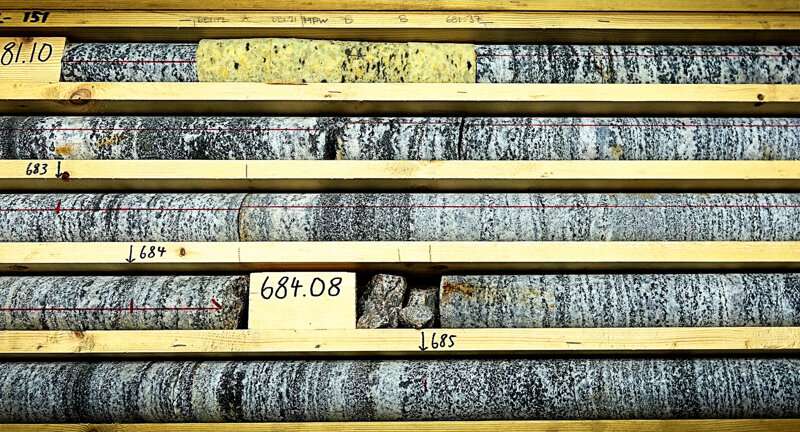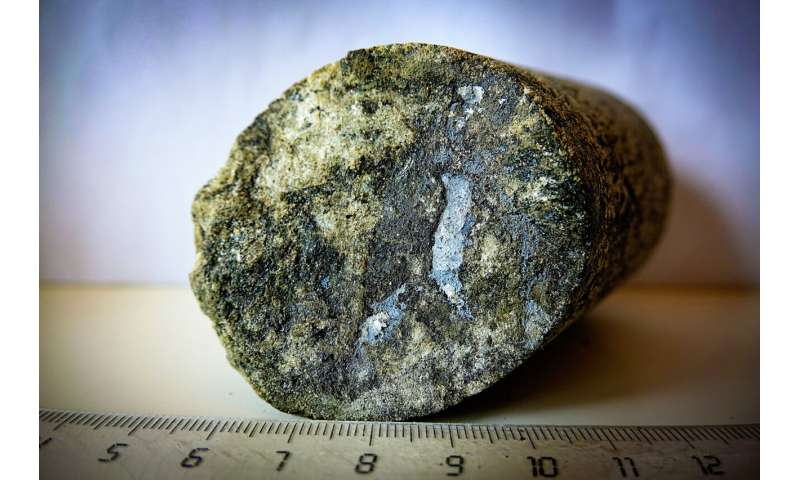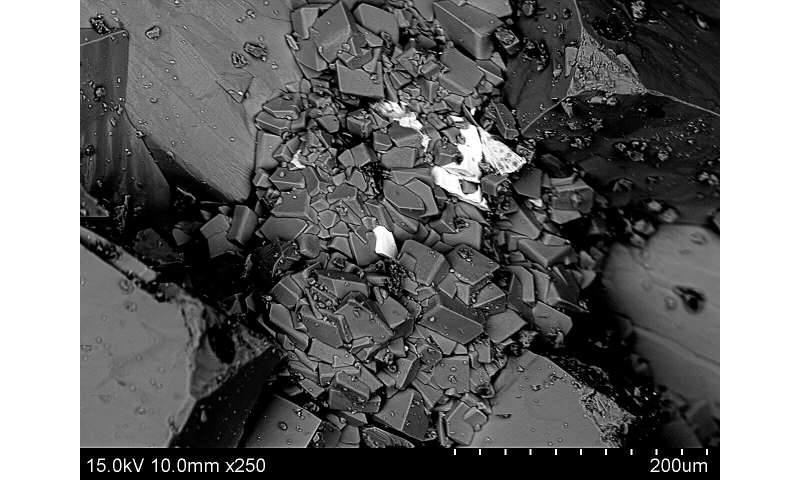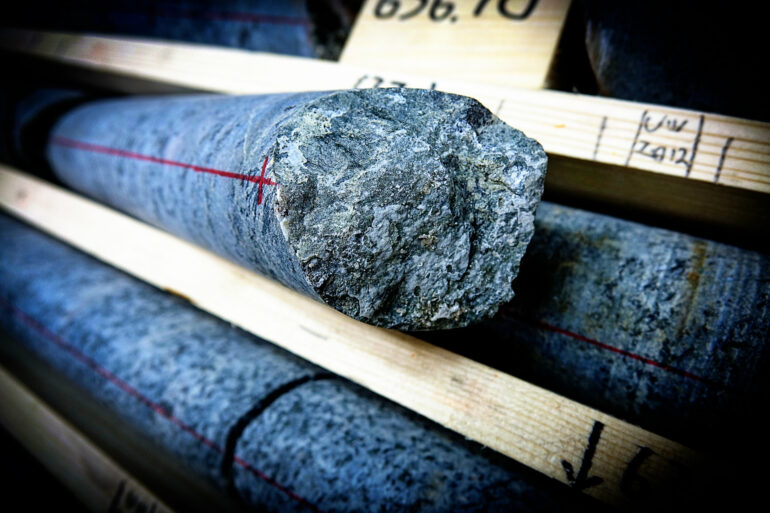A new study shows that microorganisms lived deep within the fractured bedrock of Greenland 75 million years ago. The work is published in the journal Geochemistry, Geophysics, Geosystems.
Beneath our feet lies a habitat called the deep biosphere. In this harsh environment, without sunlight and without dissolved oxygen, microorganisms have lived for millions of years. However, how long life has existed in the bedrock and how widespread it is, is less known. This is because we have only made needle pricks in this unexplored environment. But more and more pieces of the puzzle are being found.
In connection with investigations in western Greenland, researchers have drilled deep into the bedrock near the ice sheet. At several hundred meters depth, they found minerals lining bedrock fractures, which serve as important geochemical archives for ancient life.
“We used high-resolution geochronology of the calcium carbonate, a method where you examine how much uranium has decayed into lead. The dating gave ages of 64–75 million years,” says Henrik Drake, Associate Professor at Linnaeus University, Sweden, and lead author of the study.
These ages overlap with tectonic events related to the early stages, or precursors, of the opening of the Atlantic Ocean and the Labrador Sea. This suggests that deep fracture networks in western Greenland opened and were colonized by microorganisms, such as sulfate reducers, during these events. The movements of the continents have thus influenced how the deep biosphere has been colonized.

Photographs of drill cores from Greenland. © Henrik Drake

Photographs of drill cores from Greenland. © Henrik Drake

Detailed image of a mineral in a scanning electron microscope. © Henrik Drake
Drake explains the findings as chemical fingerprints, indicating that life existed in this harsh environment. Also, biological traces in the form of bacterial fatty acids were discovered, which were preserved inside calcium carbonate crystals.
“When we



